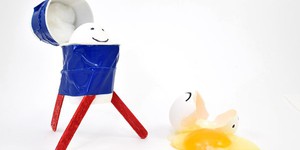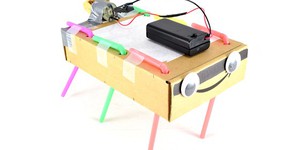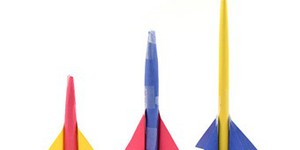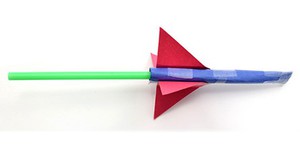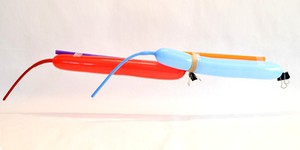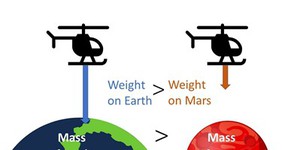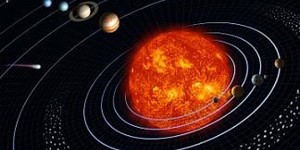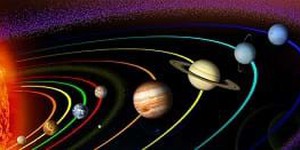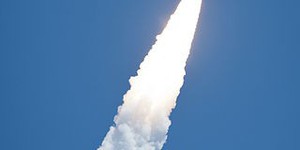Space Exploration Lesson Plans (13 results)
Space exploration is an exciting and wide-ranging area. Getting into space (and back down) is hard, involving rockets and launch vehicles, satellites, spacecraft, re-entry systems, landers and rovers, robots, and orbital mechanics, not to mention hypothetical technologies like space elevators and artificial gravity. To survive and thrive in space, we must understand many additional issues such as human performance in space, the space economy, and the science of astronomical bodies.
|
Select a resource
Sort by
|
Lesson Plan
Grade: 6th-8th
10 reviews
The egg drop project is a time-honored tradition in many science classrooms. Students build a device to protect an egg and prevent it from breaking when dropped. This project typically relates to lessons about Newton's laws of motion or potential and kinetic energy. However, it is also a great way for students to practice the engineering design process, and learn about the importance of design iteration and learning from failure.
Read more
NGSS Performance Expectations:
Featured
Lesson Plan
Grade: 6th-8th
7 reviews
Junkbots are easy-to-build robots that you can make using a simple circuit and some recyclable materials. In this lesson, your students will learn about engineering design as they compete to build the fastest robot. No previous robotics experience is required!
Read more
NGSS Performance Expectations:
Lesson Plan
Grade: 6th-8th
2 reviews
This hands-on science lesson will help your students get a more accurate view of the solar system by making a scale model. They will do the calculations, make model planets, and find out where to place them so their model reflects reality. Seeing the relative size of the eight planets and their distance from the Sun displayed before them will allow your students to grasp the structure and vastness of the solar system.
Read more
NGSS Performance Expectations:
Lesson Plan
Grade: 6th-8th
21 reviews
Do you need a fun, easy way to teach your students about the scientific method? Try this lesson that uses rockets made from nothing but paper, tape, and straws.
An elementary school version of this lesson plan is also available.
Read more
NGSS Performance Expectations:
Lesson Plan
Grade: 3rd
5 reviews
Forces, which we might instinctively describe as pushes and pulls, are acting on us at all times, but we cannot always see them. This hands-on lesson offers a fun opportunity to explore "invisible" forces like gravity and air resistance. Students will build parachutes and investigate how they allow skydivers to safely land.
Read more
NGSS Performance Expectations:
Lesson Plan
Grade: 3rd-5th
17 reviews
This lesson will introduce your students to the scientific method using a fun, hands-on activity.
A middle school version of this lesson plan is also available.
Read more
NGSS Performance Expectations:
New
Lesson Plan
Grade: 6th-12th
Create a two-part system for filtering greywater. Teams will focus on communication and systems engineering as they build separate components to filter solid and liquid waste and then combine them into one device.
Learning Objectives
Students will:
Consider the potential effects of drought and how greywater could be part of the solution.
Design a system for filtering out solid waste or liquid waste.
Consider effective communication strategies with their team.
Collaborate on their design…
Read more
Lesson Plan
Grade: 6th-8th
5 reviews
Learn about real space flight and Newton's laws of motion with this fun lesson! This new twist on a classic project lets your students build a multi-stage balloon rocket that they can launch across the classroom.
Read more
NGSS Performance Expectations:
Lesson Plan
Grade: 6th-8th
2 reviews
Space exploration poses many challenges. In this lesson, students will explore how flying a helicopter on Mars is different from flying a helicopter on Earth due to the difference in the helicopter's weight on Mars and the thin Martian atmosphere. Students will follow the engineering design process to design and build paper helicopters that might be able to fly on Mars. Before testing their different helicopter designs, students will revisit the concept of gravity, and apply their knowledge to…
Read more
NGSS Performance Expectations:
Lesson Plan
Grade: 6th-8th
Students use water balloons and a length of string to understand how the force of gravity between two objects and the velocity of a spacecraft can balance to form an orbit. They see that when the velocity becomes too great for gravity to hold the spacecraft in orbit, the object escapes the orbit and travels further away from the planet.Engineering Connection
Engineers and scientists make amazingly precise calculations so that a spacecraft's journey is timed exactly to…
Read more
NGSS Performance Expectations:
Lesson Plan
Grade: 6th-8th
Students explore orbit transfers and, specifically, Hohmann transfers. They investigate the orbits of Earth and Mars by using cardboard and string. Students learn about the planets' orbits around the sun, and about a transfer orbit from one planet to the other. After the activity, students will know exactly what is meant by a delta-v maneuver!Engineering Connection
Aerospace engineers must be creative when planning the best routes and methods to send a spacecraft from…
Read more
NGSS Performance Expectations:
Lesson Plan
Grade: 3rd-5th
1 review
Students are introduced to the engineering challenges involved with interplanetary space travel. In particular, they learn about the gravity assist or "slingshot" maneuver often used by engineers to send spacecraft to the outer planets. Using magnets and ball bearings to simulate a planetary flyby, students investigate what factors influence the deflection angle of a gravity assist maneuver.
Read more
NGSS Performance Expectations:
|
Explore Our Science Videos
DIY Hand Sanitizer Spray
Model the Planets of the Solar System
Build a Bottle Centrifuge

